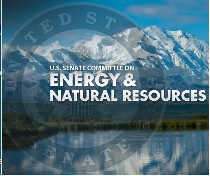Wyden Statement at Finance Committee Hearing on Spurring Private Investment in Transportation Infrastructure
As Prepared for Delivery
WASHINGTON, D.C. – June 26, 2015 – (RealEstateRama) — A lot of Americans wonder if Congress can organize a two-car parade. When you look at 33 consecutive short-term patches for infrastructure funding, it sure seems like Congress can’t pave the parade route either.
This is the second time in eight days the Finance Committee has come together to take a hard look at the nation’s infrastructure crisis. By now, there’s a good consensus with respect to the dire condition of our roads, highways, bridges, railways and ports. You cannot have a big-league economy with little-league infrastructure. Yet our transportation networks are crumbling, the price-tag of maintenance down the road is growing, and America’s infrastructure is falling far behind our competitors’.
Last week our hearing focused on the drastic shortfall in transportation infrastructure funding, which leaves the highway trust fund running on fumes every few months. Finding a pathway to a long-term source of revenue for the trust fund is absolutely essential so that projects can get underway and construction workers stay on the job. To solve this crisis, the Highway Trust Fund has got to be solvent and healthy. But that’s only one part of the solution.
The U.S. needs more than a trillion dollars of new investment just to get our infrastructure up to a level of good repair. Even with a steady stream of revenue, there’s still a big gap between the work that needs to be done and the resources to make it happen. That’s why it’s so critical that Congress find some fresh ideas to get projects off the ground, including financing tools with proven records of success. That’s what today’s hearing will focus on – getting private dollars off the sidelines and into the game on infrastructure.
Six years ago, when the Senate was looking for a way to spark investment in infrastructure, it turned to a proposal I and a bipartisan group of colleagues had been supporting for a long time called Build America Bonds. At the time, people thought it was a nice little idea that would generate $4 or $5 billion in private investment. That turned out to be a big underestimation. In less than two years, Build America Bonds sparked more than $180 billion worth of investment.
Oregon took advantage of the program to build a new interchange in Eugene, improve the highways around Clackamas County and Bend, and a whole host of other projects across the state. States across the country saw their own projects get off the ground. So there shouldn’t be any question as to whether there’s an appetite for effective financing tools for infrastructure.
Last month, Senator Hoeven of North Dakota and I introduced a bill called the Move America Act to provide an effective new approach to financing. Picking up on several of the best features of Build America Bonds, our new proposal, according to the Joint Tax Committee, will turn an $8 billion taxpayer investment into $226 billion worth of infrastructure projects.
Our proposal will cut red tape that’s been a bureaucratic nightmare for states, localities, and the private sector in the past. And unlike Build America Bonds, this proposal is permanent. Let’s not put an expiration date on a good idea.
I believe the Move America Act, and the smart approach to financing that it represents, are going to be a key part of the long-term plan that solves our transportation infrastructure crisis. There is a lot of work to be done, and it can’t begin as long as Congress is falling back on short-term funding patches. On this issue, Congress has punted more times than the Oakland Raiders. So in my view, it’s time to do better.
I hope this hearing will help bring the committee closer to a comprehensive solution to this crisis and drive home the message that Congress has to adopt some fresh ideas like Move America.
Contact:
Lindsey Held (202) 224-4515
















